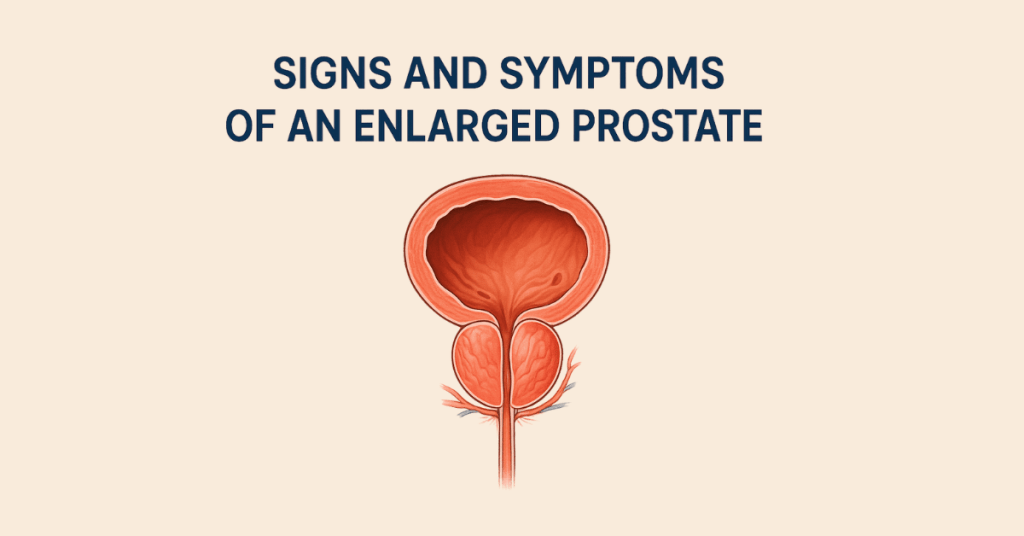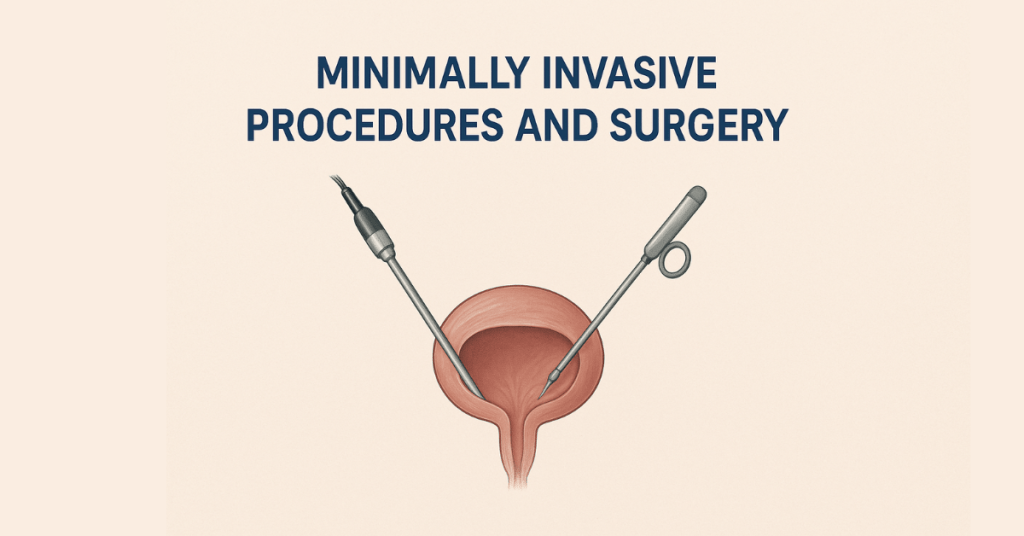An enlarged prostate is a common condition that affects many men as they age. Also known as benign prostatic hyperplasia (BPH), it occurs when the prostate gland grows larger than normal, often leading to urinary difficulties and other discomforts. Recognizing the early signs and seeking timely medical care is essential to prevent complications and maintain quality of life.
Signs and Symptoms of an Enlarged Prostate.

Understanding the symptoms of an enlarged prostate can help you detect the condition early. Some common signs include:
- Frequent urination, especially at night
- Difficulty starting or stopping urination
- Weak urine flow or dribbling
- Feeling of incomplete bladder emptying
- Sudden urge to urinate
If you notice any of these symptoms, consulting a healthcare professional is crucial. Early detection allows for more effective enlarged prostate treatment and can prevent the progression of the condition.
Causes and Risk Factors
Prostate gland enlargement is mostly linked to aging and hormonal changes. While the exact cause of BPH is not fully understood, several factors can increase the risk:
- Age (more common in men over 50)
- Family history of prostate problems
- Hormonal changes affecting testosterone and estrogen levels
- Lifestyle factors such as obesity or lack of physical activity
Understanding these risk factors can help you take preventive steps and seek early prostate gland enlargement treatment.
How to Manage an Enlarged Prostate?
Effective enlarged prostate treatment involves lifestyle changes, medications, and sometimes surgical procedures, depending on the severity:
Lifestyle Modifications
- Limit intake of caffeine and alcohol
- Reduce fluid intake before bedtime
- Maintain a healthy weight and exercise regularly
- Practice bladder training techniques
Medications
- Alpha-blockers to relax the muscles of the prostate and bladder neck
- 5-alpha-reductase inhibitors to shrink the prostate over time
- Combination therapies for more severe symptoms
Minimally Invasive Procedures and Surgery

For advanced cases, prostate gland enlargement treatment may include procedures like transurethral resection of the prostate (TURP), laser therapy, or other minimally invasive interventions to relieve urinary obstruction.
When to Seek Medical Help?
Persistent symptoms such as blood in urine, urinary retention, or severe pain require immediate attention. Early intervention with proper enlarged prostate treatment can significantly improve quality of life and prevent complications such as urinary tract infections or kidney damage.
Conclusion
Recognizing and managing an enlarged prostate is essential for maintaining urinary health and overall well-being. With a combination of lifestyle changes, medications, and appropriate prostate gland enlargement treatment, most men can effectively manage BPH and reduce its impact on daily life. If you experience symptoms, consult a healthcare provider promptly to discuss the best enlarged prostate treatment plan for you.
